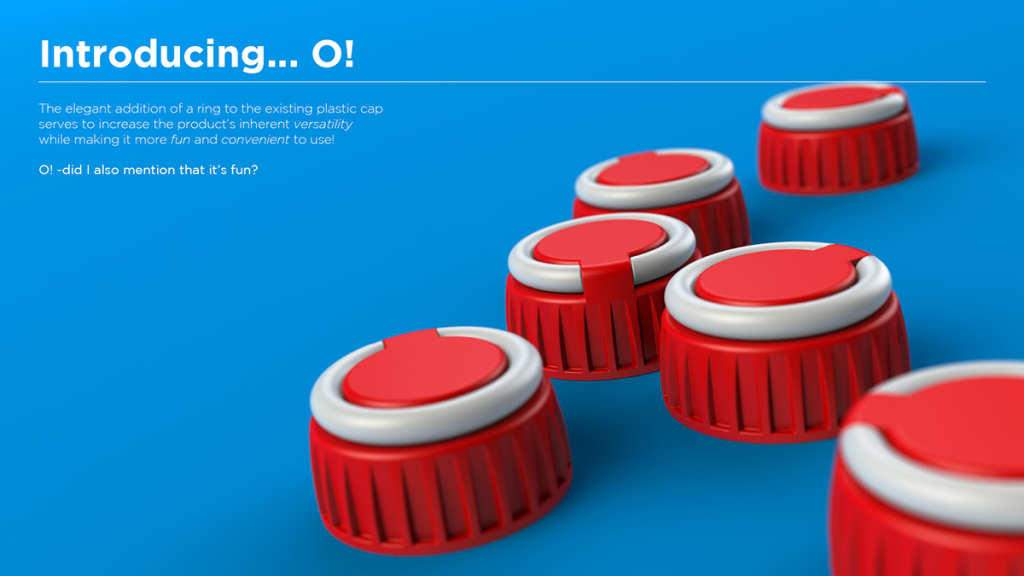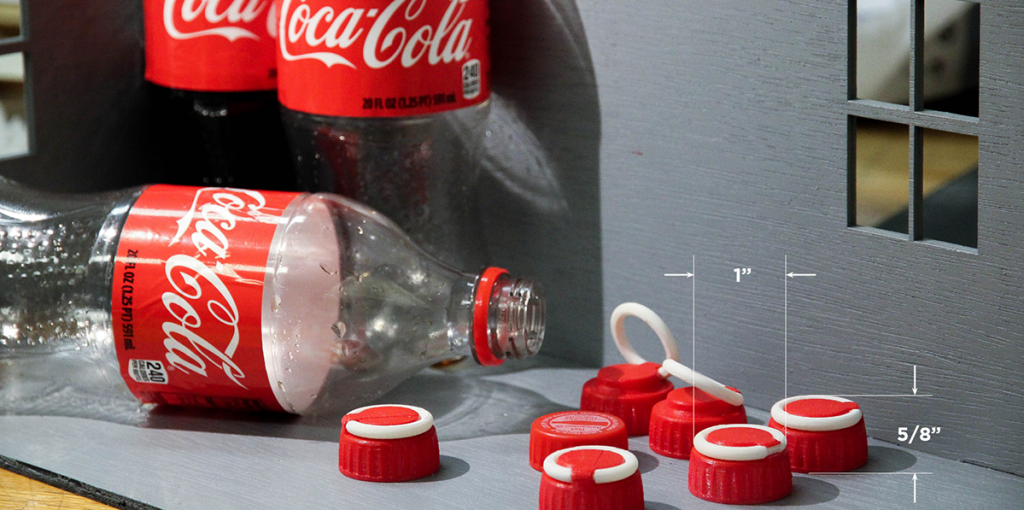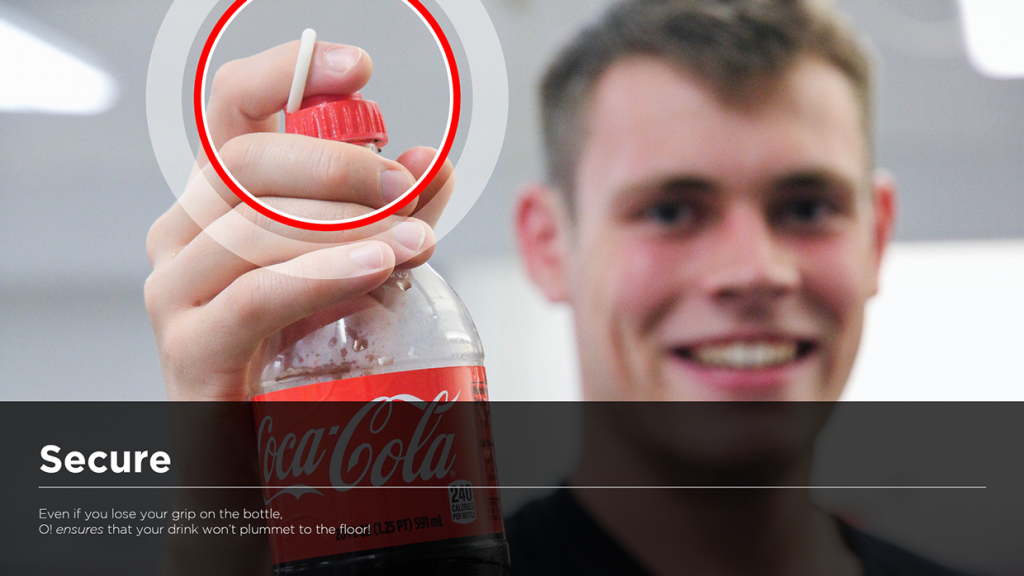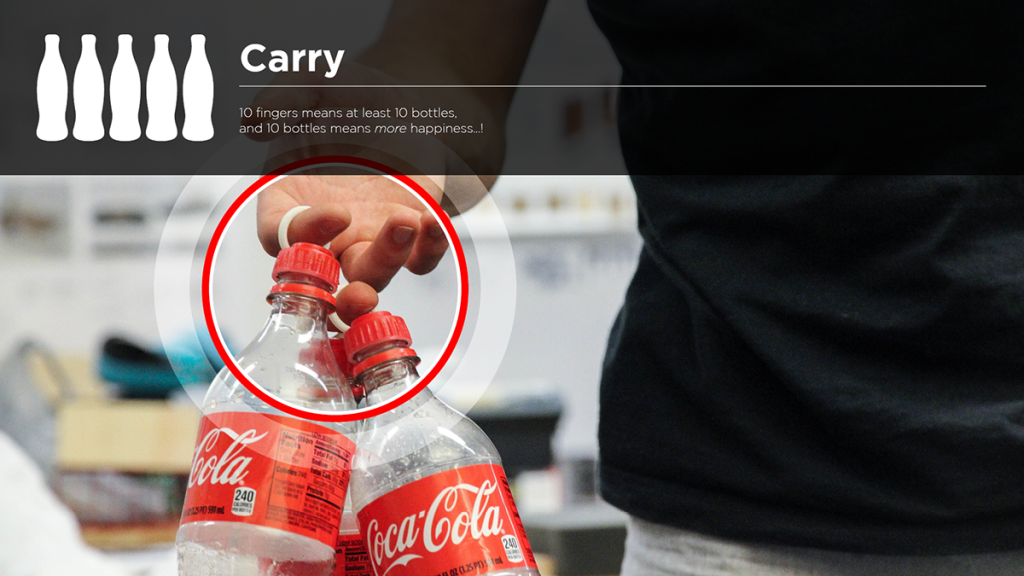Up-and-coming industrial designer Sunny Su is part of a new generation of creators who use 3D printing to take product designs from concept to reality faster than ever before. In a way, Su is flipping the product development process from creating a need for a given product to discovering a need and designing a new product–in this instance, his clever O! beverage bottle cap–to respond to it.
Su is a third-year student in the industrial design program at the North Carolina State (NC State) College of Design in Raleigh, North Carolina. Recently, he presented his product on Behance, a major online platform for showcasing and discovering creative work being produced across the globe. Thanks to Behance, creative people around the world can present their work on the site and companies can find it.
Su specializes in what he refers to as “systems, service, product, and experience design,” a creative ethos that regards product design as a more complex dynamic. His expertise lies in interdisciplinary consultation: He meets with small business owners and entrepreneurs launching new ventures and facilitates product, brand, and identity development, market analyses, user research, testing, heuristics (hands-on learning), and ergonomics.
In a beautifully designed visual chronology posted on Behance, Su described his process from the initial idea phase to the fully-realized, functional product. He began conceiving of O!, he explained, by “observing and interviewing 20+ consumers ages 12-55” regarding their experiences with popular carbonated beverages. He wondered how their expectations synced (or didn’t) with those of the companies that were producing and marketing them.
Su concluded, following his research, that it wasn’t the quality of the product itself–clearly, a major player on the carbonated beverage market–that his focus group was concerned with, it was the packaging. Those 12 oz. bottles were evidently just the right size for his pool of consumers but they all seemed to have convenience and portability issues. While the plastic bottles made it easy to enjoy a beverage on the go, that portability could be enhanced.
After taking in the invaluable feedback of his focus group, Su sat down and began the first step of his design process–“1. Ideate.” As he describes it, “Sketch until you can’t sketch anymore…Then sketch some more!” What he came up with was an ingeniously basic carrying system for the lids rather than the entire bottles. In essence, a replacement lid that included a ring through which the consumer’s finger fit–hook your finger through the ring and voilà! you’re on the move, beverage on hand, hands nearly free.
Phase two, “Iterate,” involved refining his design. Su worked out on paper the best way to create the simple structure of the lid-and-ring combination. He created and 3D printed multiple versions of the prototype first in basic white material of the O! and tested them with consumers.
The final iteration, which he 3D printed in separate pieces, is easily assembled, with the cap in red and the ring in white. He foresees the beverage company producing the lids and rings via injection molding. Both, he explains, would be produced using recyclable high-density polyethelene.
There are some additional, exciting and eco-friendly implications where Su’s O! is concerned. The reusable lids with their convenient carrying rings have the potential to encourage consumers to reuse the bottles and lids. Imagine, for example, setting out on a jog or a long bike ride and filling the bottle with water or an energy drink, hooking it via a colorful carabiner to a backpack or a belt loop!
Su’s project proves that, often, the simplest answer really is the best one. It also illustrates how integral 3D printing has become to the rapid prototyping process!
Subscribe to Our Email Newsletter
Stay up-to-date on all the latest news from the 3D printing industry and receive information and offers from third party vendors.
You May Also Like
3D Printing News Unpeeled: A $3000 SLS System, Construction Subsidies and Parameters
The Housing Affordability Crisis is one of Canadian President Trudeau’s biggest issues. Now the government has made subsidies available, including scaling new technologies, 3D printed housing and libraries of reapproved...
“Bundled Light” Enables High Quality Plastic 3D Printing from LEAM
Naturally, we expect current 3D printing methods to continuously improve, but it continues to do so in the most surprising ways. The latest development comes from LEAM, a startup spun...
Each to Their Own: Exploring Creality’s Latest Ender Trio as the Company Strengthens Its Commitment to 3D Printing Advocacy
Creality has reaffirmed its commitment to promoting 3D printing. The launch of the Ender-3 V3 SE, Ender-3 V3 KE, and Ender-3 V3 showcases the company’s dedication to catering to diverse...
3D Printing News Briefs, March 23, 2024: AM in the US Coast Guard, Navy, & More
In today’s 3D Printing News Briefs, we’re discussing the use of 3D printing in various branches of the military, including the U.S. Coast Guard, the U.S. Navy, and the German...






































